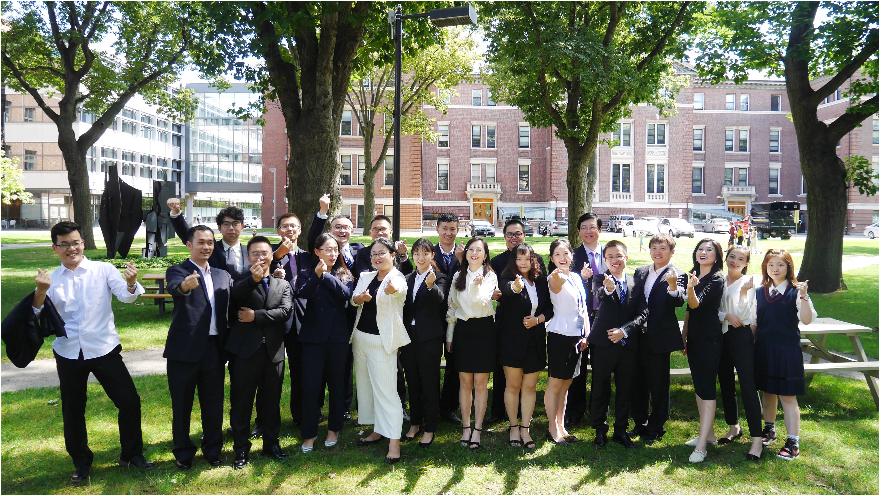The CQU 2019 summer delegation to Harvard University and Massachusetts Institute of Technology themed “future elite development, innovation and leadership” returned to Chongqing University safe and sound on the morning of August 19, 2019 of Beijing time after a 20-day period of course learning, government enterprise visit and city tour. The academic exchange was officially brought to an end with gratifying results.
The delegation was made up of 19 members from 10 schools and 6 faculties. Led by Chen Dong, head of the Graduate Work Department of the CPC CQU Committee and deputy dean of the Graduate School of Chongqing University and Mr. Pei Guangshu of the Graduate Work Department, the delegation participated in course learning at Harvard University and MIT in Boston, the USA; visited government enterprises in Washington DC; and had a city tour in New York from July 29 to August 19, 2019. During the stay in the USA, the delegation members always kept in mind their mission and took the initiative to integrate into the western-style courses; carefully learned the related knowledge of “innovation and leadership” to expand their horizon; experienced the cultural deposit of the campus of top universities through in-depth practice; and experienced VR labs, brain-computer interconnection and other cutting-edge technologies. Through learning and exchange, students gained a comprehensive understanding of western teaching mode, teaching ideas of top universities, culture, customs and history of the USA. More importantly, their international communication skills got improved, international horizon broadened and international leadership and innovation power enhanced. The successful academic exchange was also a fruitful trip of academic visit, civilization and friendship.
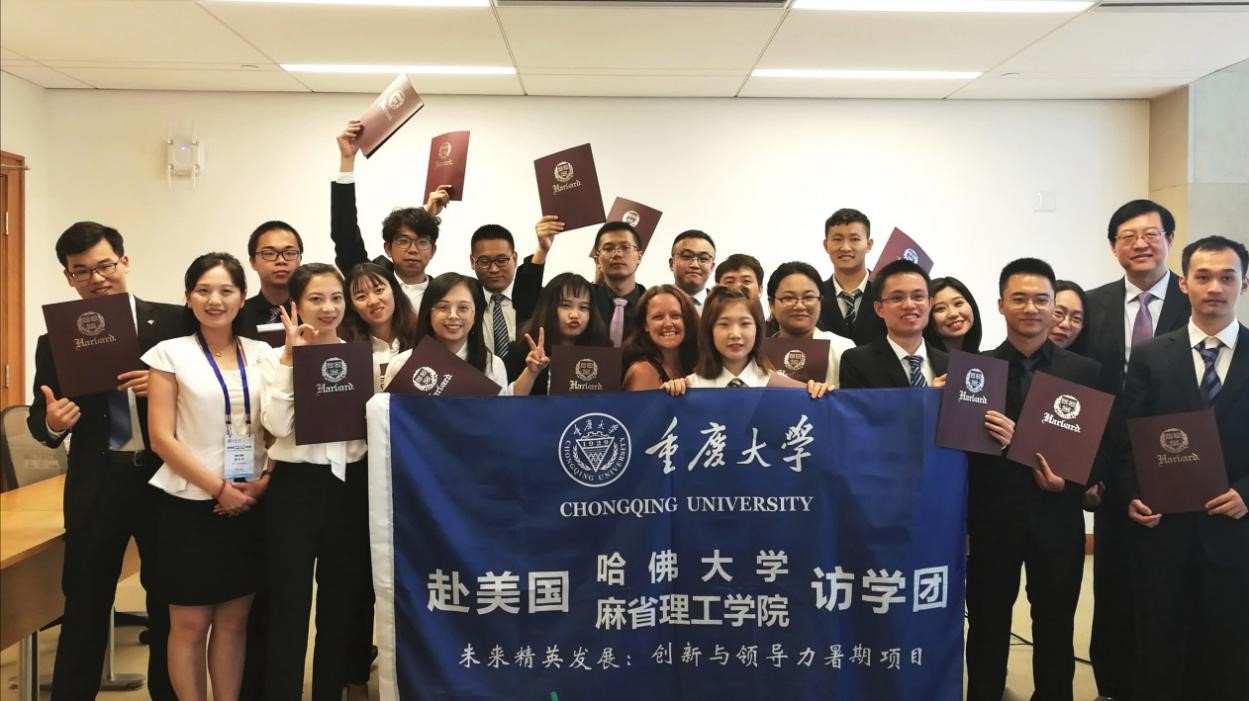
Opening ceremony
The opening ceremony kicked off in Room WCC1015 of Harvard University at 9:30am on July 31 of the local time. Professor Stacey Gelsheimer of economics of Harvard University presided at the opening ceremony. Professor Stacey extended warm welcome to the delegation and gave a detailed introduction to Harvard University in terms of development history, schools and departments, educational systems, faculty, major achievements and cultivation of overseas students. Then the two sides exchange souvenir of friendship. At the opening ceremony, students introduced themselves and Professor Stacey explained to the students the main course arrangement of the summer program and the requirements for achievement exhibition required to complete the courses.
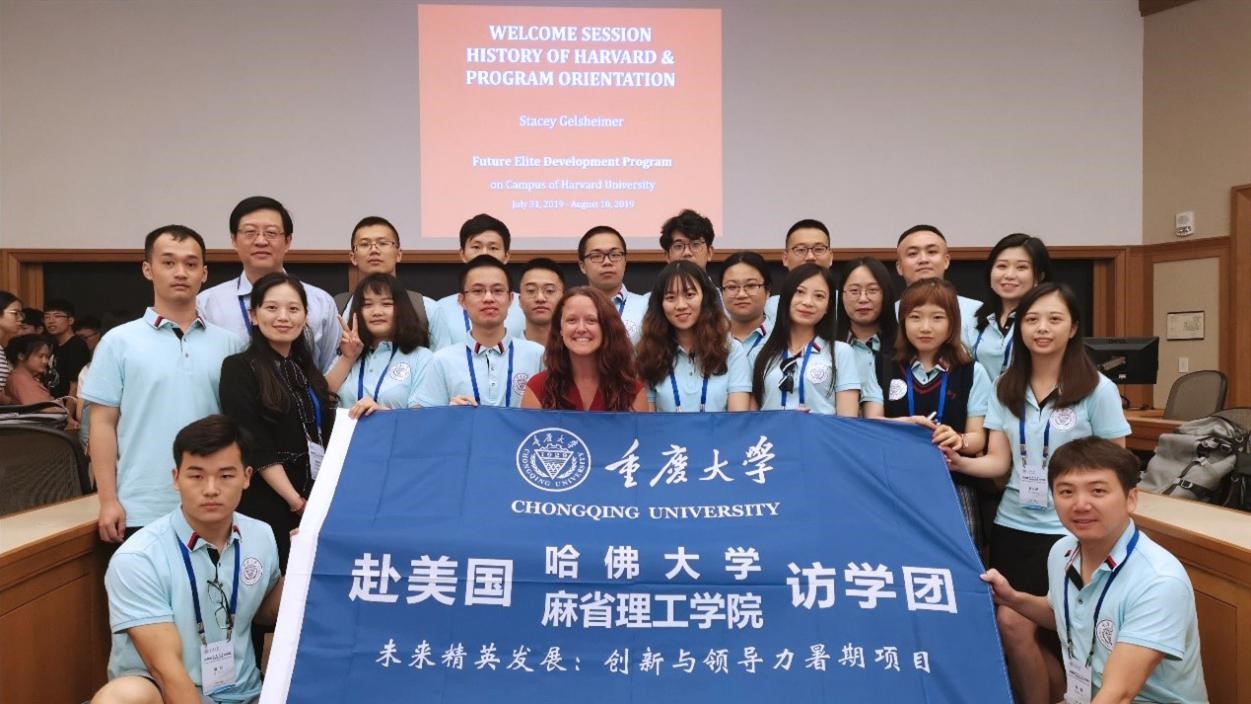
Course learning
1. Global Economic Outlook and Impact (A Harvard University course)
On the morning of August 1, the first day of course learning, Professor Stacey Gelsheimer of economics of Harvard University delivered a lecture titled Global Economic Outlook and Impact. In the class, Professor Stacey introduced to the students the basic concepts and principles of economics and discussed with students over topics like growing GDP, importance of trade and the role of financial system.

2. Strategic Planning in a Global Age (A Harvard University course)
On the morning of August 2, Professor Hise Gibson of Harvard University delivered a lecture of two hours named Strategic Planning in a Global Age in Classroom WCC1015 of the Harvard Law School. Professor Hise discussed with students over topics like the definition of strategic planning, the difference between strategic planning and long-range planning, factors to be considered for strategic planning, the relation between strategic planning and your tasks and the benefits of strategic planning.
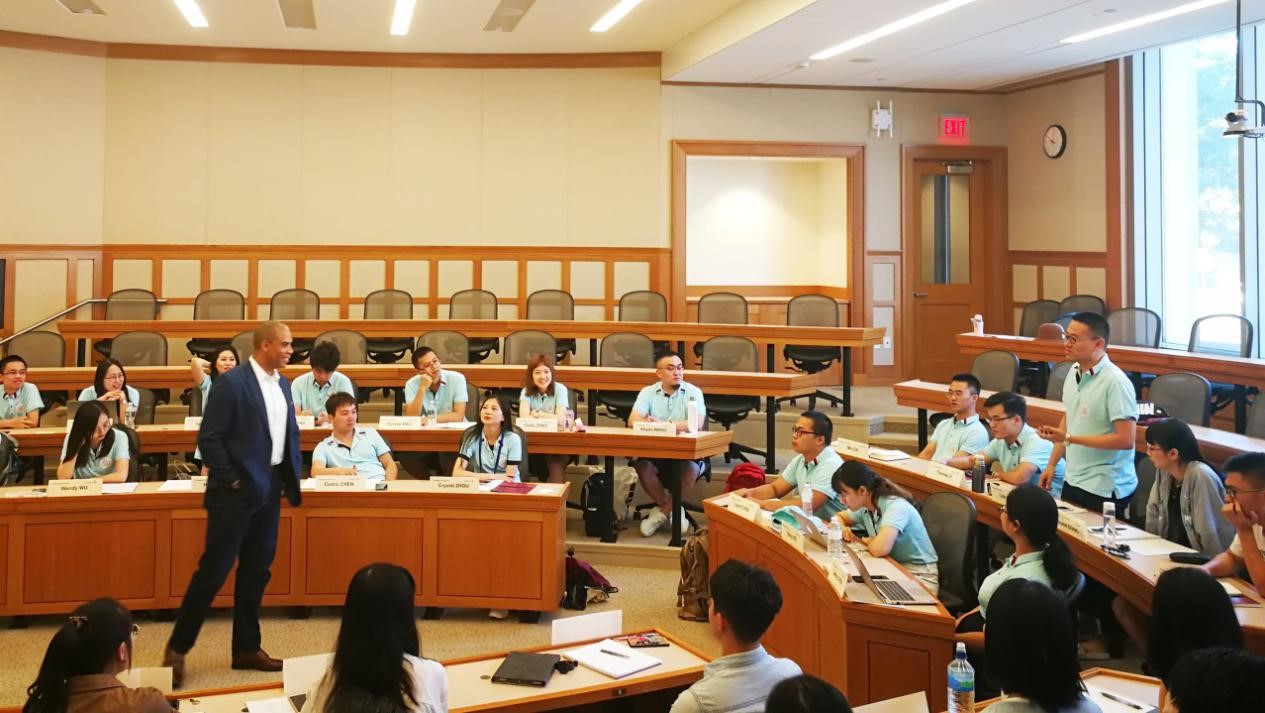
3. The Art of Communication (A Harvard University course)
On the morning of August 5, Professor Steve Jarding, an American international educationist, lecturer, writer and political consultant and a founding partner of the International Strategic Department of SJB, delivered a lecture titled The Art of Communication to students in Classroom WCC1015 of Harvard Law School. Processor Steve communicated with students with respect to topics like what to say, who is the listener, how the listener will understand what you have said and how your words will influence the behavior or belief of the listener. Then they asked the students to role play in groups of two as a way of reflection and practical drill.

4. Building Sustaining Customer Relationships (A Harvard University course)
On the morning of August 6, Professor Duncan White delivered a lecture titled Building Sustainable Customer Relationships in Classroom WCC1015 of Harvard Law School. Professor Duncan explained related concepts of sustainable customer relationship from the perspective of economics in the ancient Roman times in the class, and gave an introduction to elements needed for building a sustainable customer relation, including brands and price. The most direct influencing factor is the trust between the customer and the business. Students intending to start a business or engage in related professions were greatly benefited.

5. Human Computer Interaction (An MIT course)
On the morning of August 7, Professor Renson of MIT delivered a lecture titled Human Computer Interaction in Classroom E51-385 of MIT. Professor Renson explained to students how human and computer interact with each other and how will it benefit our daily life in the future by ways of pictures and video clips.
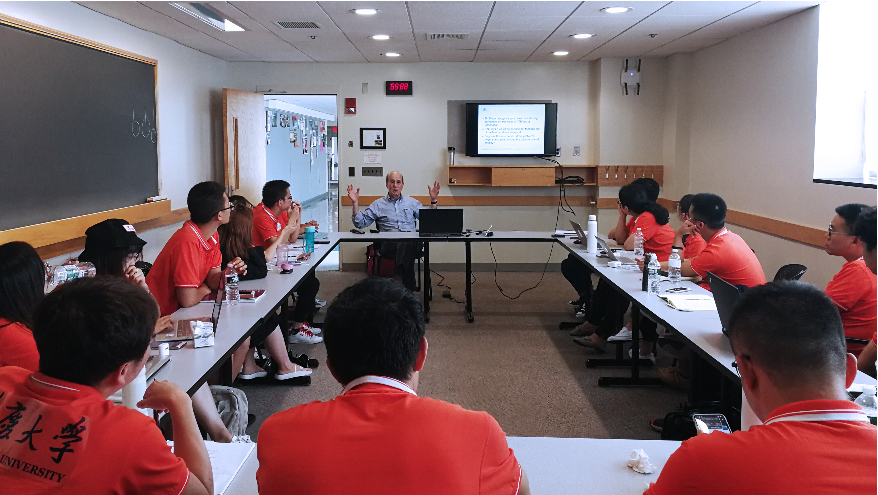
6. Building A Tech Venture (An MIT course)
On the morning of August 8, Professor Elaine Chen of MIT delivered a lecture titled Building A Tech Venture in Classroom E51-390 of MIT. The lecture covered two topics, i.e., innovation power and innovation blueprint of companies. By taking the class, students understood that the vitality of an enterprise lied in its innovation power and gained knowledge of creating a scientific and technological enterprise.
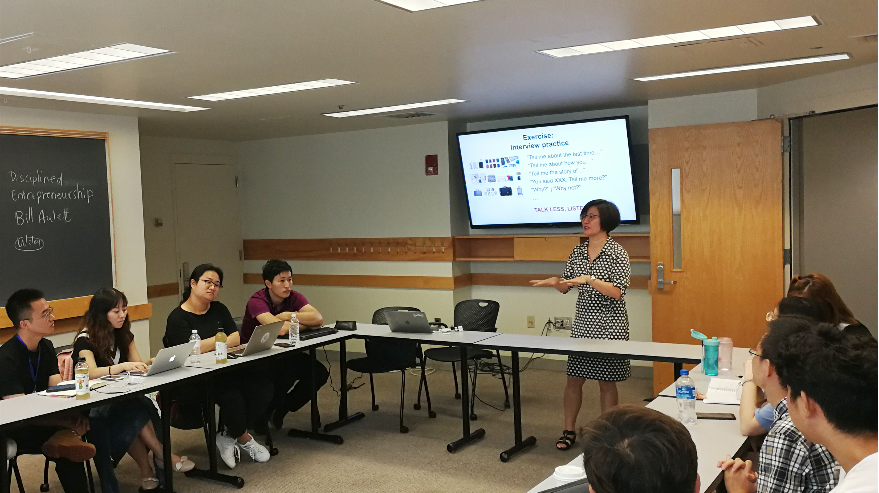
7. Robotics and Artificial Intelligence (An MIT course)
On the morning of August 9, Professor Renson of MIT delivered a lecture titled Robotics and Artificial Intelligence in Classroom E51-390 of MIT to students. Professor Renson introduced in the class to students the development of robots and artificial intelligence in nowadays and areas of possible breakthroughs in the future. Students gained deep understanding of artificial intelligence thanks to the witty teaching style of Professor Renson.

8. Final Representation (course completion ceremony of Harvard University)
On the morning of August 10, the course learning was completed. The delegation participated in the final representation. The course completion ceremony was held in Classroom WC4059 of Harvard University and included several parts including final representation competition, appraisal by chief examiner professors, selection of outstanding groups, awarding of course-completion certificate and photo taking. Stacey Gelsheimer, the leading professor of the academic exchange of CQU delegation and a professor of economics of Harvard University, presided at the ceremony.

The final representation was made in groups. Every student made a final representation on their achievements in English without a manuscript, and was highly praised and commended by Professor Stacey.

Professor Stacey highly praised the innovation ability of every group. Eventually the No. 2 Group with led by Chen Jiebin, a Law School student, was selected as the outstanding group after the final representation and appraisal of representation content. The Group was awarded the recommendation letter for Harvard University.
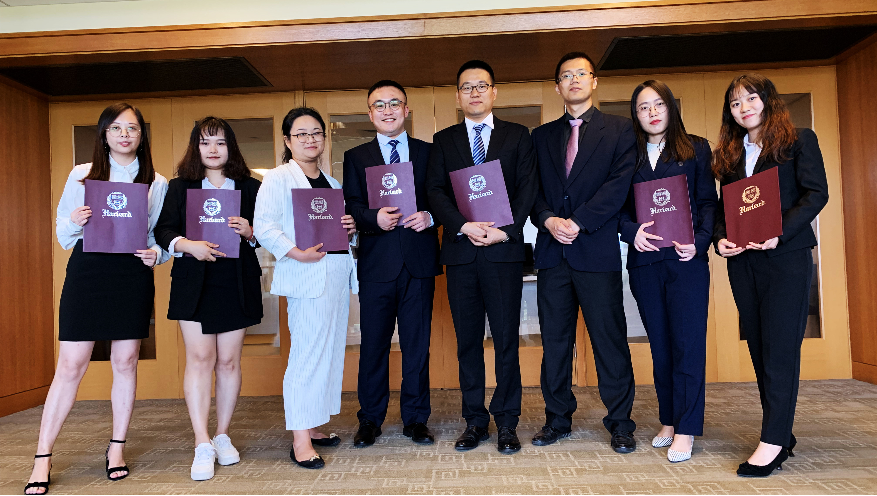
Campus tour
[Campus tour around Harvard University]
On the afternoon of July 31, as guided by elite students of Harvard University, the students had w campus tour around Harvard University, and experienced the glamour of this world top university. Students also gained an understanding of the development history of Harvard University and were greatly impressed by the rich cultural deposits and unique style of the campus.
Harvard University is a private research university well-known all over the world, and is also a member of Ivy League. It enjoys predominant academic positions and extensive influence in areas including literature, medicine, law and commerce, and is widely recognized as one of the top higher education and research institutions in the world. Eight US presidents, including Franklin Roosevelt and Barack Obama, graduated from Harvard University. Furthermore, of the graduates, professors and researchers of Harvard University, 158 have won the Novel Prize (world No. 1), 18 have won the Fields Medal (world No. 1) and 14 have won the Turing Award (world No. 4).

[MIT campus tour]
On the afternoon of August 7, the delegation had a tour around the campus of MIT as guided by elite MIT students. The CQU students were greatly inspired and their horizon broadened by the scientific innovation power and scientific research spirit of this top university.
MIT is famous for its leading role in engineering science and computer science and is home to MIT CSAIL, MIT Lincoln Lab and MIT Media Lab. In the 2016-2017 ARWU, MIT is ranked the world first place and second place respectively in terms of its engineering science and computer science. It was dubbed as an academic leader in the engineering science and technology circle together with Stanford University and University of California Berkeley. Of all MIT graduates, 93 have won the Nobel Prize (world No. 6), 8 have won the Fields Medal (world No. 8) and 26 have won the Turing Award (world No. 2).
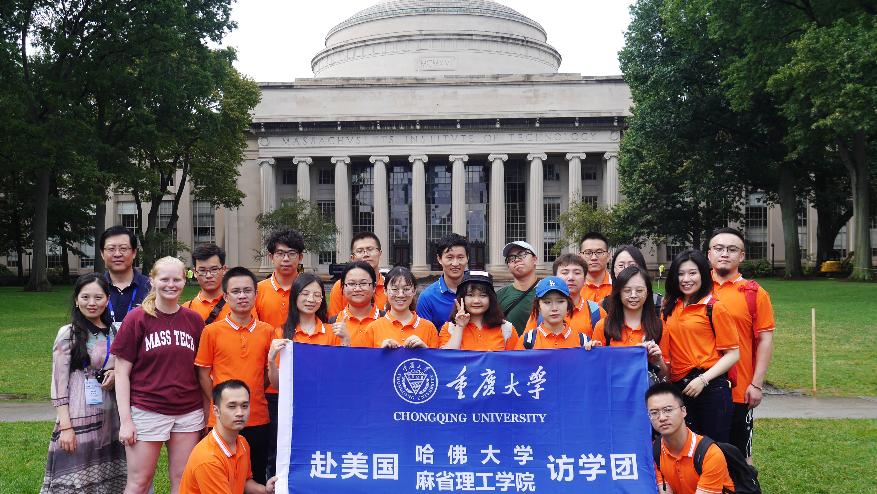
[A tour around the campus of Perkins School for the Blind]
On the afternoon of August 8, the delegation arrived at the Perkins School for the Blind, the first school for the blind in the USA founded by Samuel Gridley Howe (1801-1876) in 1829. The students were moved by how the life of the blind was improved by the technologies and how hard they studied and felt overawed.
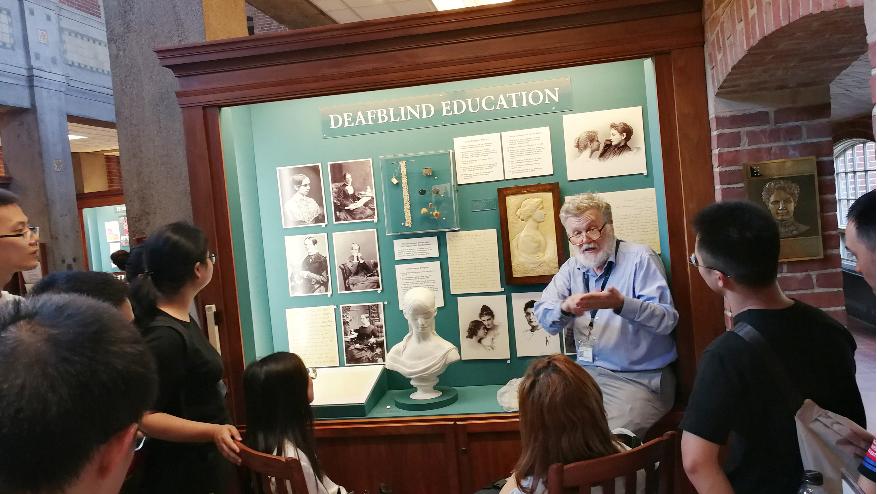
[Columbia University campus tour]
On the morning of August 16, the delegation arrived at Columbia University located in Manhattan of New York. It is one of the world top private research universities and a member of the Ivy League and one of the universities that have cultivated the greatest number of Novel Prize winners. It is dubbed as the cradle of political and economic leaders. Five founders of the USA, four US presidents including Obama and Roosevelt, and 34 heads of states and chiefs of government, and 10 chiefs justice of the Supreme Court of the United States graduated from Columbia University. The Scholar Lion of Columbia University is regarded as one of the symbols of the Columbia University in the new era, as it demonstrates its aggressive ambition in education.
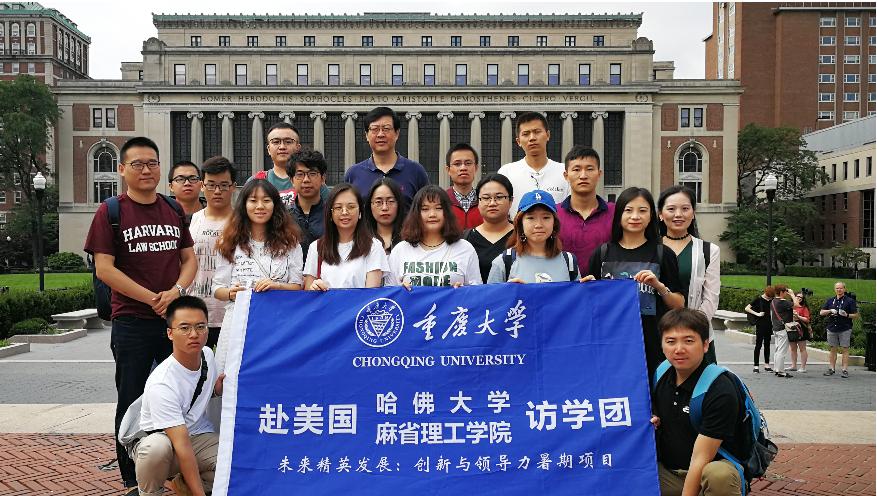
Scientific and technological exploration
[VR Lab of MIT]
On the afternoon of August 2, the delegation arrived at the “VR Lab” of MIT and experienced the VR technology in the Lab after gaining a brief understanding of the origin and current development of VR.
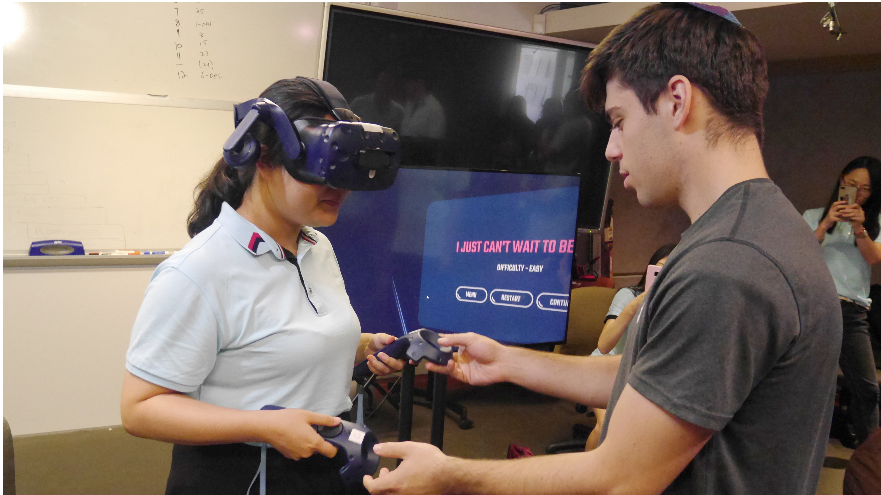
[Brain Co]
On the afternoon of August 5, the Delegation arrived at Brain Co. It is a technological product company specialized in research and development of brain-computer interface technology. Application areas of its products include treatment and living aids for the disabled/amputation patients through cranial nerve feedback training, so as to improve the attentiveness and learning efficiency of users. Chinese employees of Brain Co that have graduated from MIT gave an introduction to the conceptual development history of BMI –Brain Machine Interface, and invited the students to experience the product.

Visit to government enterprises
[Edward M.Kennedy Institute for the United States Senate]
On the afternoon of August 9, the delegation arrived at Edward M.Kennedy Institute for the United States Senate. After watching the application of intelligent technologies and listening to the detailed explanation by the interpreter, students gained further understanding of the construction of the Kennedy government, historic characteristics and profound significance. During the visit, students participated in the legislation voting to experience the legislative system and legal institution of different countries, and went over the lifetime and experience of President Kennedy.

[United States Capitol]
On the morning of August 13, the delegation visited the United States Capitol. The United States Capitol is the seat of United States Congress, and is located on the 25m-high Capitol Hill, Washington DC. Its foundation stone was laid by President Washington in person in 1793 and it was brought into use in 1800. The United States Capitol was built up taking Pantheon as the model, and looks magnificent. This commemorative structure is the representative of buildings of the classical revival style. Students had a deep understanding of the main halls, construction and part of the development history of the Capitol after listening to the detailed introduction of the interpreter.
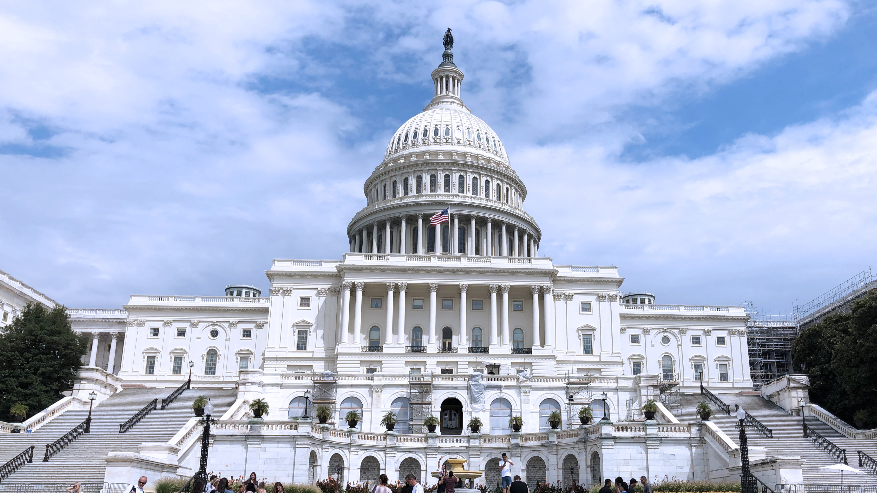
[UN Headquarters]
On the afternoon of August 15, the delegation visited the UN Headquarters. The United Nations Headquarters are located on the bank of the East River in Manhattan, New York, and the main building looks like a “matchbox”. In front of the building fly the national flags of member countries of UN and in the square sit well-known statues such as Swords into Plowshares and A Knitted Pistol, which are often seen in books and TV programs. Students visited the Security Council, Trusteeship Council, Economic and Social Council, Assembly Hall, and Conference Hall and viewed the exhibition of the history of UN in the Hall as guided by the workers. Students learned about the cruelty of war and preciousness of peace, which are the reason why UN has always been devoted to maintaining world peace and development.
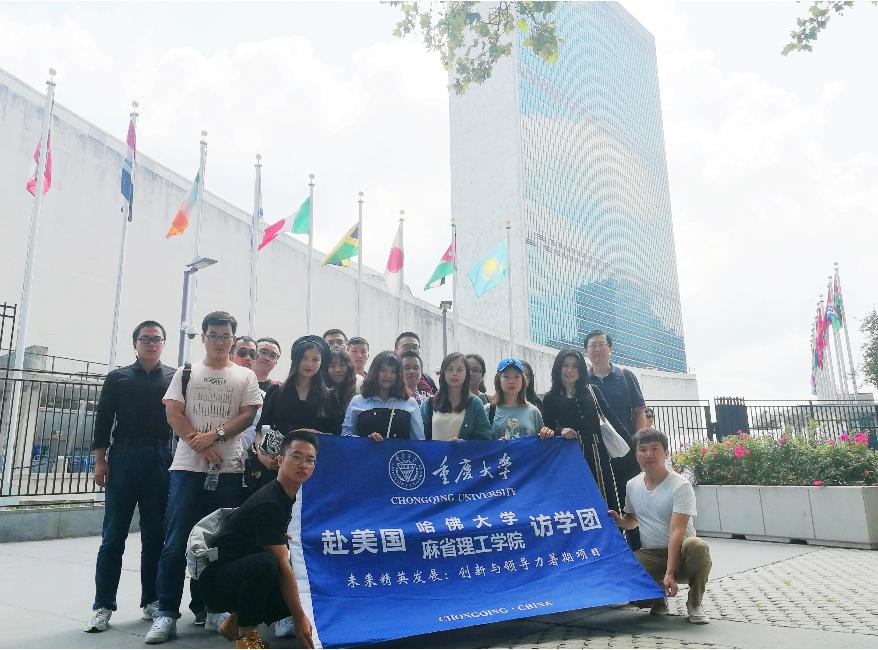
Humanity history and artistic influence
[The Freedom Trail]
The Freedom Trail was conceived by a Bostonian journalist named William Schofield in 1951. It is a trail paved with red bricks and is 3km in length. It starts from the Boston Common and ends at Bunker Hill Monument. Along the Trail there are 16 historical sites and it is deemed as an important trail that has witnessed the historic development of Boston.
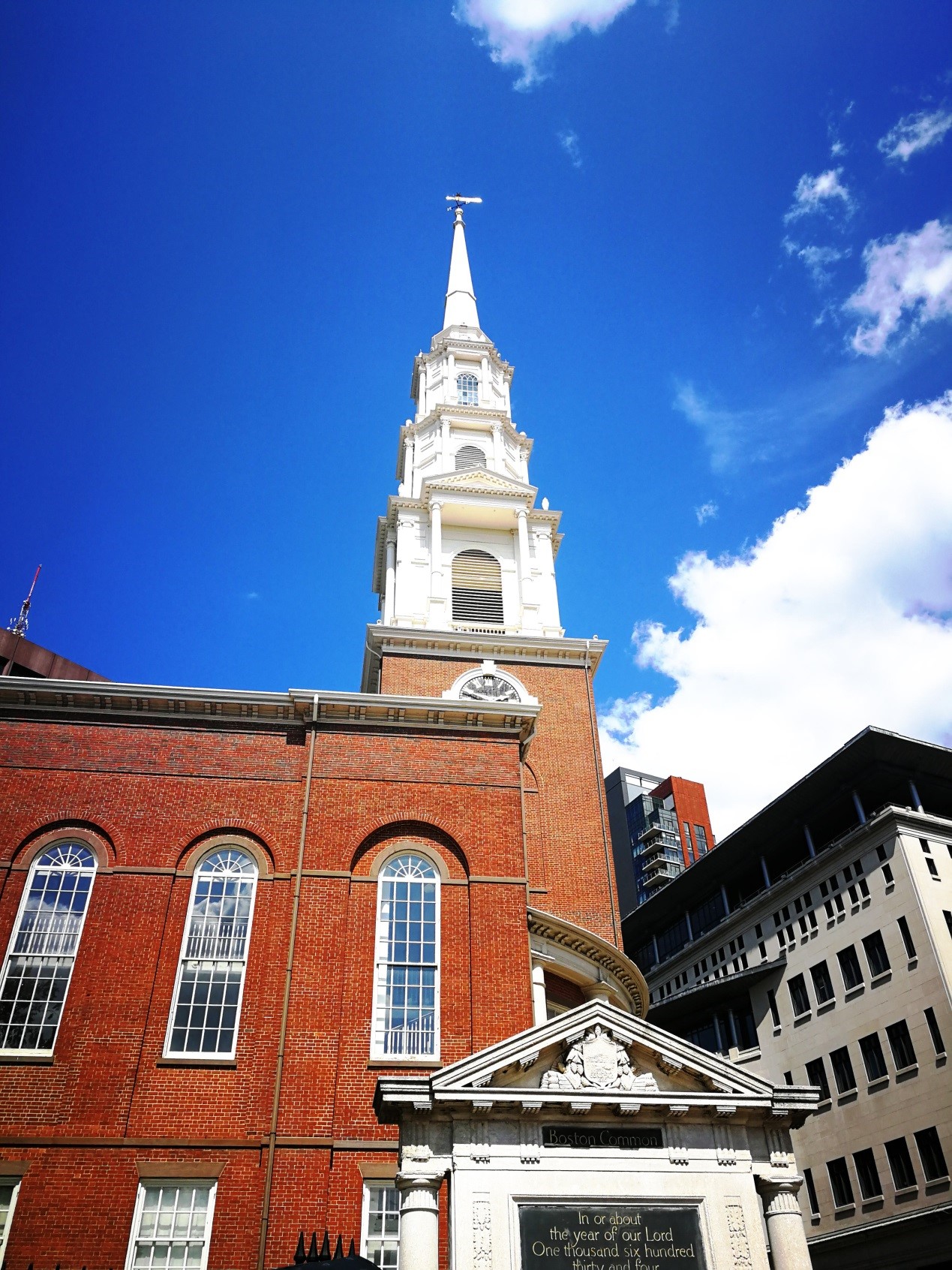
[Lincoln Memorial]
Lincoln Memorial is a memorial established in memory of US President Lincoln. It is located on the east side of National Mall and in front of Arlington Memorial Bridge. The Memorial is in the same line with the United States Capitol and Washington Monument.
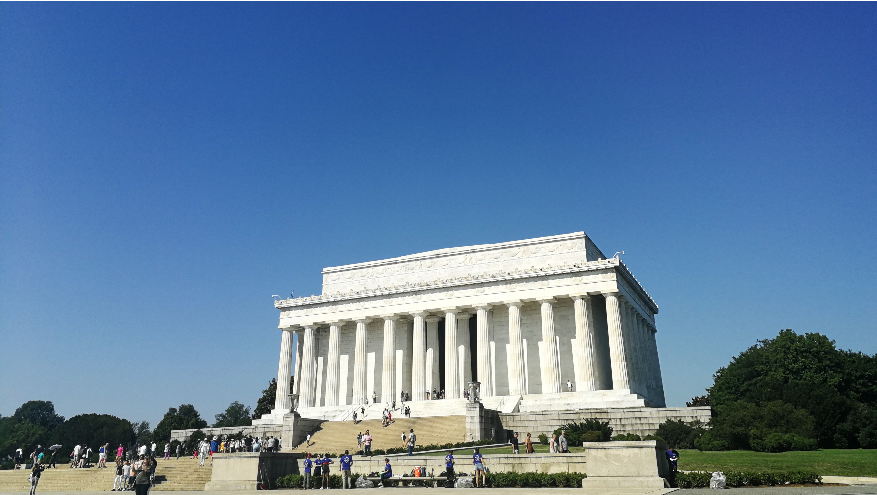
[Washington Monument]
Washington Monument was built up in memory of US President George Washington, and is located in the downtown of Washington DC right on the axis of United States Capitol and Lincoln Memorial. The Monument is an obelisk made of marble, surrounded by a carpet of green grass. Rallies and parades are often held here.
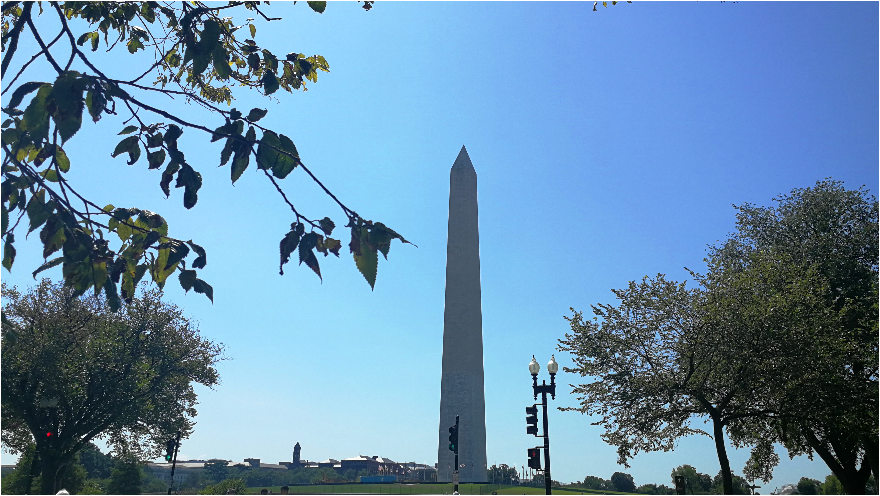
[National Air and Space Museum]
The National Air and Space Museum was opened in July 1976, with an exhibition area of 18,000 square meters. It is one of the many museums founded by Smithsonian Institution, and is the No. 1 flying-themed museum in the world.

[National Museum of Natural History]
The National Museum of Natural History is the largest natural history museum in the world and serves as one of the main natural history research and education centers of the USA. This Museum is ranked the first place among museums all over the world in terms of its connections of paleontology and anthropology. Previous stones, and specimens of marine organisms and mollusc collected by the Museum are particularly valuable.

[National Gallery of Art]
The National Gallery of Art is an art museum of Washington DC and is attached to the US government. It is managed by the Smithsonian Institution. Collections of the Museum include more than 40,000 pieces of oil painting, sculpture, sketch and print works, including works of masters like Da Vinci, Raphael, Manet, Monet, Vincent van Gogh and Picasso.
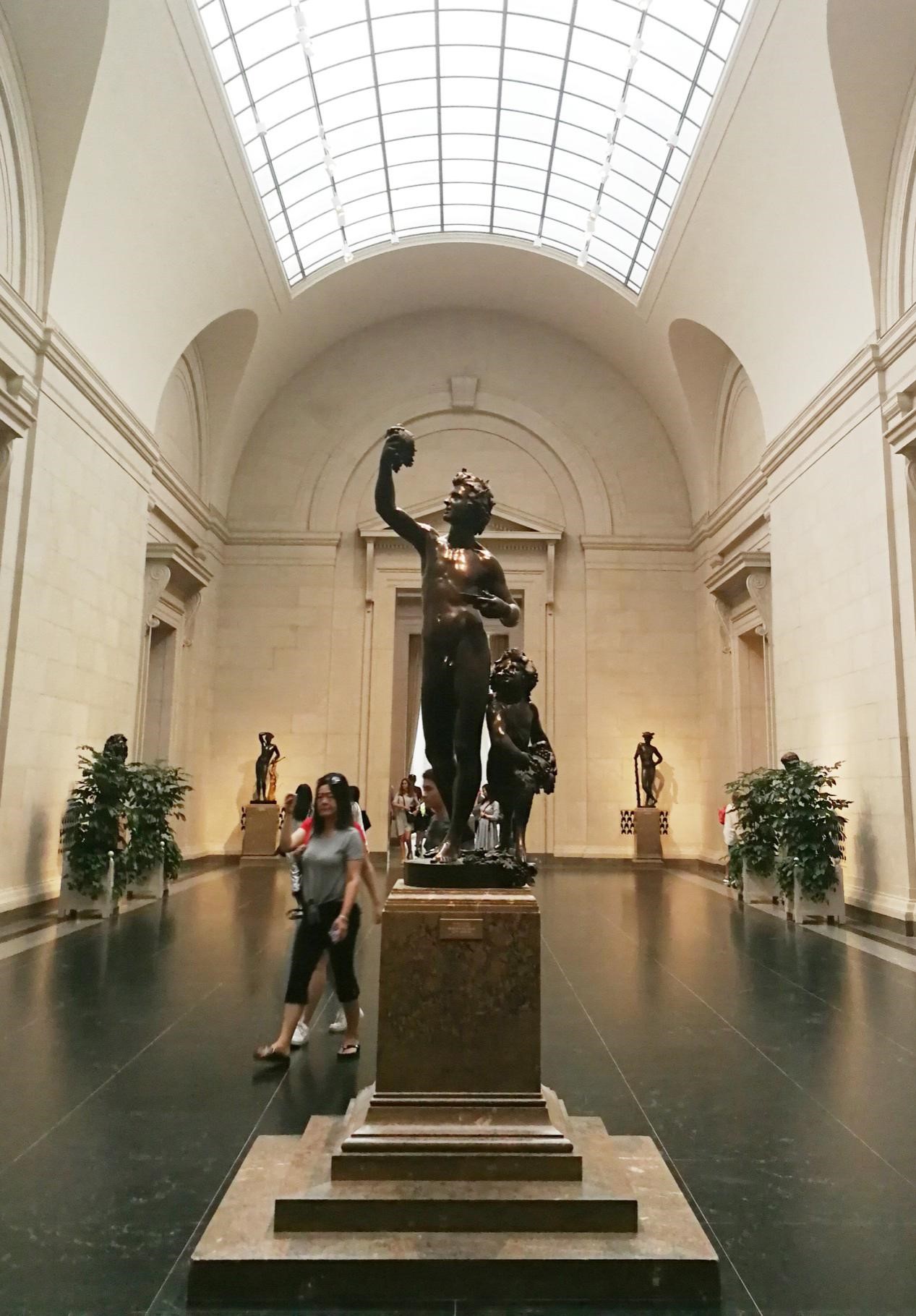
[New York Times Square]
New York Times Square is a bustling square of Manhattan, New York, and is dubbed as the “crossroads” of the world. It is located amid the concrete jungle, surrounded by countless shopping malls and theaters. It is a prosperous entertainment and shopping center. The neon advertisements and large screens on the two sides of the street are catching people’s eyes and advertisement and promotional videos of places all over the world are being played. There are an average of about 70,000 visitors of different colors and nationalities coming to the Square. Street performance has become one of the features of this place.
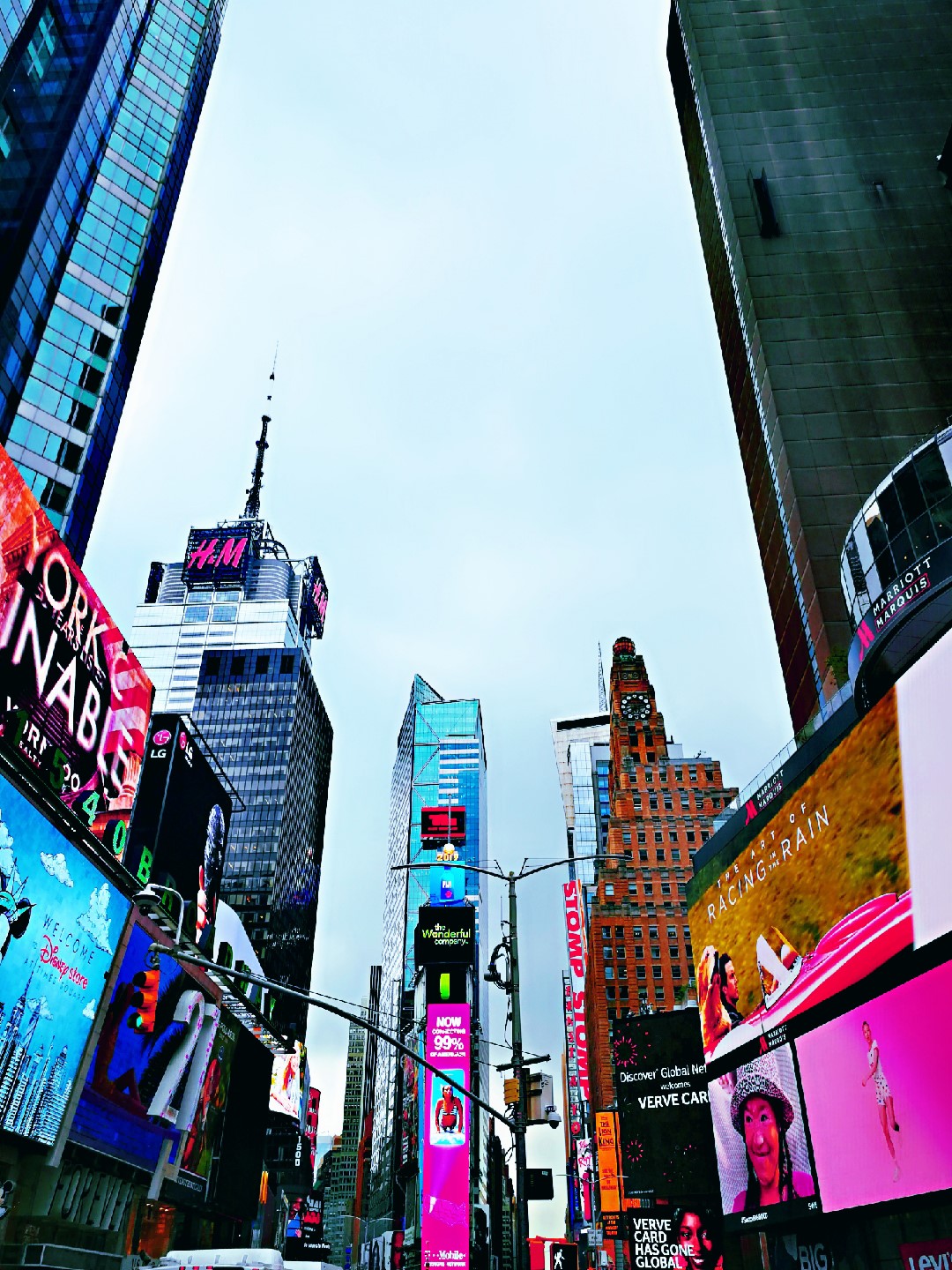
[The Statue of Liberty]
The Statue of Liberty is a national monument of the USA located on the Liberty Island at the Hudson Estuary. The Statue is wearing a shining royal crown and holding the Liberty Torch high up, with the Declaration of Independence held in her hand. The Statue of Liberty has a full name of Liberty Enlightening the World, and is the symbol of the USA. It was presented by France to the USA in 1876 as the gift for the 100th Anniversary. In 1984, it was added to the world heritage list.

[Wall Street and World Trade Center/Ground Zero]
Wall Street is the seat of some major financial institutions of the USA, and is also where the headquarters of financial institutions such as New York Stock Exchange and Federal Reserve Bank, and large banking companies, insurance companies and shipping companies founded by financial groups like Rockefeller, Morgan and DuPont. Wall Street is the symbol of high concentration of finance and investment.
Ground Zero (the World Trade Center Ground Zero after September 11 attacks). The World Trade Center is a building group in Lower Manhattan made up of seven buildings. Since it was brought into use in 1973, this dual-tower structure has been one of the landmarks of New York. These two towers are respectively called the “south building” and “north building” respectively, and were then the tallest buildings in the world. In September 11, 2011, World Trade Center was attacked, striking the world with astonishment. The about 415m-tall twine towers collapsed in a second into a heap of rubble, killing more than 3,000 people. After the attacks, the word “Ground Zero”, which originally refers to the denotation point of nuclear device or missile target, became the name of the relics of World Trade Center.
After the visit, students simmered with the yearning for Wall Street and the anger and sadness about the September 11 attacks. They learned about the importance of world peace and expressed their hope that people will make joint efforts to safeguard the peaceful development.
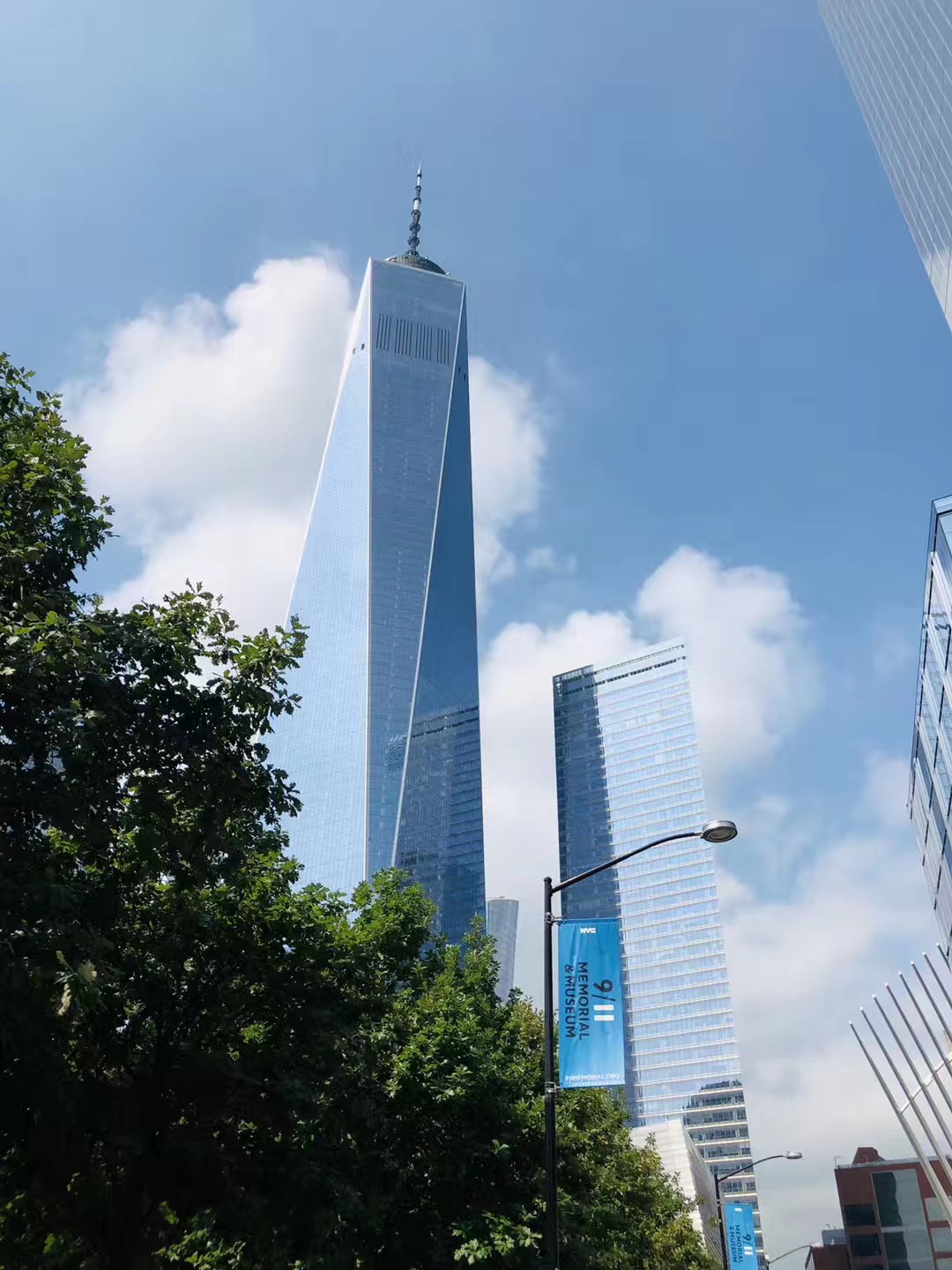
Feelings and experiences
Sheng Huaxing, an undergraduate of 2014 of the School of Architecture and Urban Planning: This overseas exchange is a very valuable experience in my life. What we’ve seen and heard during the overseas exchange is influencing our choice of the path of life and thinking patterns. In this summer, we learned about the advanced scientific and technological ideas of foreign countries and experienced their advanced teaching mode, and their rich cultural history and customs. In addition, we had the opportunity to appreciate the unique glamour of foreign urban buildings and architectural design, which has enriched my life experience. Furthermore, our ability got improved. I was able to use my English listening and speaking skills when I communicated with foreigners. My independent thinking and living ability was tested and my communicating skills and social skills got considerably enhanced.
During the visit, I paid special attention to the local classroom atmosphere, and I found that teachers respected the students’ independent consciousness. In the class, teachers would encourage students to raise questions and solve simple problems through thinking and communication within a team. This allowed the students to exert their abilities to solve the problem independently. Furthermore, teachers kept encouraging students to make attempts and probe into a problem in an active manner, so that every student had the opportunity to get involved and express their opinions. The university campus construction of the US is something that we should learn from. The open campus design results in a seamless connection between the campus and the streets. The campus facilities are open to citizens, so as to maximize the public resource efficiency. In the peri-MIT streets, there are many scientific and technological innovation companies engaged in capitalization of knowledge, thus realizing integrated development of universities, industries and research institutions. The campus environment is not distinctly different from the outside environment. The megaform building group provides spaces for multi-disciplinary exchange and communication. Development of scientific research is considerably fostered in such an open and intermingling academic atmosphere. However, we should realize that despite its great power, there are many hidden risks. China is well-positioned to surpass the USA. Furthermore, America is facing a number of social problems, such as huge gap of wealth, high unemployment rate and high crime rate.
At last, I would like to thank Chongqing University for giving me this valuable chance of foreign exchange, and thank the leading teachers for their selfless and considerate care. I would also like to thank other students for the friendly cooperation. Chongqing University delegation, as a team, did a great job in this summer program.
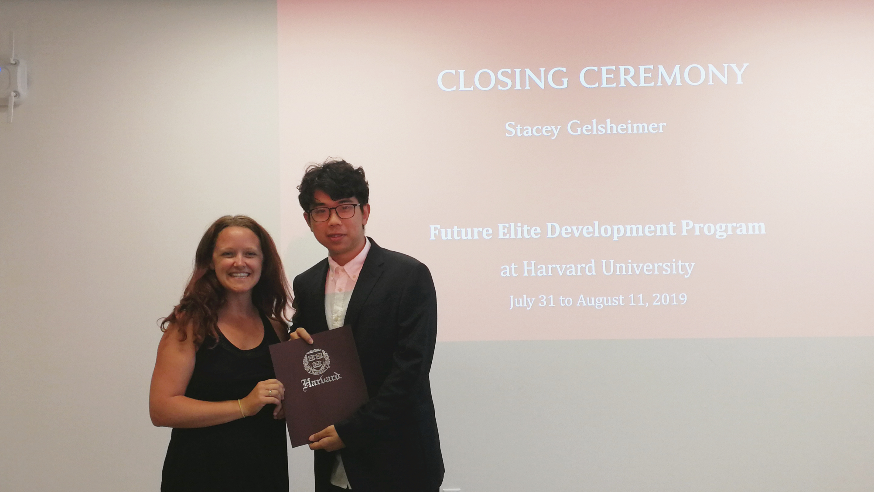
Yin Yating, a postgraduate student of 2018 of the Law School: I arrived in the USA, curious and nervous. During the 20-day course learning and cultural experiencing, I learned about the difference in teaching style and cultural history of different countries and had my knowledge widened. Unconsciously, my English speaking skills and innovation skills got enhanced and knowledge of cultural history broadened. I also learned to look at the same problem from different perspectives. We should discover, explore and observe the world from different angles and then we’ll see different things. This world and our science and technology are now developing at a pace none of us could have imagined. In the future, science and technology will improve our life experience and that’s what our generation should aim at.
In this overseas exchange, I saw and heard a lot of new things. I have come to realize that the only way to figure out what we should be and what we want to be is to see more about the world. I’m lucky enough to join such an outstanding team and I’m grateful to every member of the team. I hope we all keep in mind our original aspiration and forge ahead despite trials and tribulations.

Chen Renqin, a postgraduate student of 2018 of the School of Computer Science: The overseas exchanged lasted only 3 weeks. I was still deeply impressed by the earnestness and responsibility of Harvard University students. I remembered on the evening of the second day when we were touring around Harvard University campus, the interpreting student was still working despite the heavy rain. I think we should learn from this spirit. During the learning period, as an engineering student, I was not familiar with many of the concepts and so I raised questions frequently. The lecturing professor answered my questions with great patience, which had benefited us considerably and broadened my horizon. In the course-completion project, the team members expressed their opinions and offered advices actively. I was greatly impressed by their dedication and devotion. What’s more important, I learned a lot in the process. I’m so lucky to have the chance to make friends with those outstanding students.
During the short stay in Boston, I witnessed with my own eye the glamour of this city of wisdom well-known for its highest education level in the USA. People in Boston are friendly and inclusive. My experience in Boston will be my life-time previous treasure. During the trip, I appreciated the advancement of America in terms of culture and economics. As new-generation Chinese students, we should study for a rejuvenating China and make unremitting efforts in studying and scientific research, so as to become a man of use and contribute to construction of China. By that time, China will stand out amidst world nations.
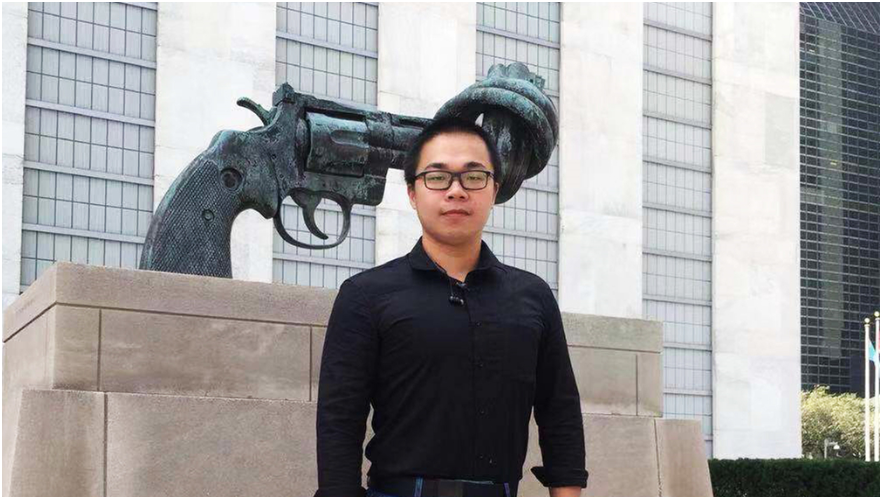
Luo Yufeng, an undergraduate student of 2016 of the School of Architecture and Urban Planning: During my stay in the US for nearly three weeks, I was able to experience the western teaching style that is different from the Chinese style in Harvard University and MIT, two world top universities. I also paid a visit to a number of enterprises from chocolate factories and the United Nations headquarters, and some popular scenic spots of the USA, like some museums and monuments and the Times Square. I had a taste of different kinds of local food. While impressed by the diversity, inclusiveness and wildness of American culture, I feel proud of the rapid development, strong national strength and profound cultural deposits of China.
Besides the experience of western teaching mode and American culture, communication with students from other schools also benefited me a lot. The questions raised by students and interaction with them in the class, and the help we offered each other in the trip and during preparation for the course-completion competition allowed me to feel the warmth and cohesion of Chongqing University as a family. For me, this trip is indeed a fruitful one.
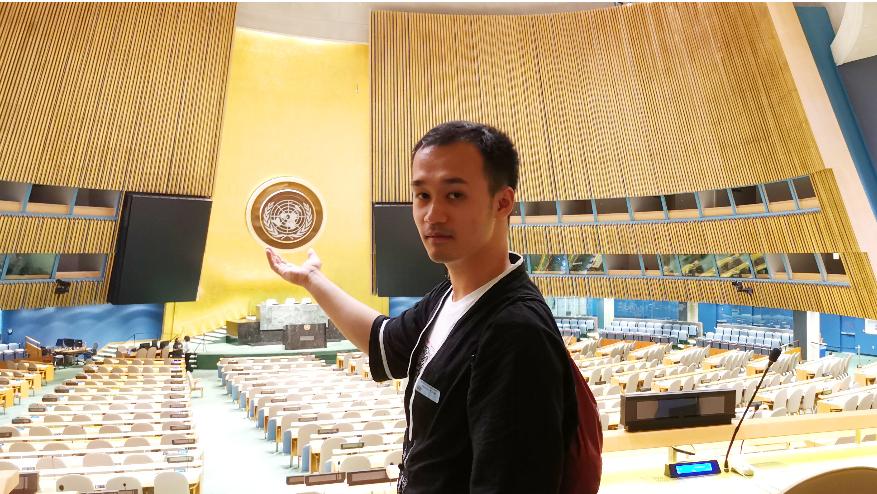
Zhou Xian, a doctoral candidate of 2016 of the Law School: We experienced a heavy traffic jam when we first arrived in Washington DC. The White House, the US Department of Commerce, the Federal Reserve and other state agencies within several miles of the center line of Washington DC are all marks of a national political center. The apartment buildings and villa clusters located on the boundary of Washington DC are where people live their life.
Perhaps people tend to go with the flow. We drove from the north to the south to Washington DC. When we were looking for a place to have dinner, we decided to go forward, rather than backward to the south, where we could have more choices. An unimpressive pizza store was right on the opposite side of us, and we could even smell the alluring pizza. However, we decided to keep going northwards, hungry and purposeless.

Many nights when I was about to fall asleep, I would feel a sudden desire to check the status of the paper I had submitted to the journals. This desire lasted a short time and vanished quickly maybe because I was too sleepy.
Of my companions along this trip, there were undergraduates waiting for the results of postgraduate recommendation selection and postgraduates worrying about their job hunting. There were only a few doctoral candidates, fed up with journals and papers. Whatever academic level and emotional status we have, we felt happy in the innermost during this period of “escape”. It was like every trouble was ridiculous and inexistent. I suddenly come to realize the reason: The unstrained relax and freedom.
Cai Yanhong, an undergraduate student of 2016 of the School of Management Science and Real Estate: In the 20-day period, I experience the coziness and quietness of the countryside of Boston and the solemnity of the capital city of D.C., and the hustle and bustle of New York. On the campus of Harvard University in Boston, the ancient buildings exhibit glamour of romance and arts. The warm sunlight and grassland and shade of trees reminded me of the lazy hours. The orderly and fantastic buildings of MIT made me feel like I was in a future town. Visitors would feel a smell of freedom and willfulness. In the capital city of D.C., the White House, monuments, the Parliament and museums are all located around the National Mall, making this small and orderly neighborhood even more crowded. The entire town is filled with culture, history and memory. New York, a city with countless signatures such as the Statue of Liberty, Times Square, UN Headquarters, the Empire State Building and knicks and Nets, remains mysterious and glamorous.
During the 20-day overseas exchange, the most unforgettable memory was the moment when I rode on the old and dilapidated New York Metro with my companions, the moment when we walk through an unnamed beach of Boston, and the moment when we shared hamburgers, steak, salad and chocolate, no matter they were tasty or not. I still remembered the nights we stayed up late to make preparation for the final presentation of Harvard University. These moments we experienced and the friendship we built will be my lifetime memories.

The delegation departed on July 29, 2019 and returned to China on August 19. The 20-day overseas exchange has been brought to a fruitful and gratifying end. During the 20 days, students attended classes at Harvard University and MIT, visited scientific and technological enterprises, and experienced the most advanced technologies and the charm of arts and culture. This full and rich trip has not only widened the knowledge of the students, improved their language skills and broadened their international horizon, it allowed the students to think and see the world from different perspectives and in different ways. Their innovation ability and international leadership thus got enhanced. During the trip, the leading teachers showed considerate care for each student. The students worked in unity and helped each other and exerted their skills to play a role in the team. When in the USA, students cared for each other and experienced the most unforgettable moments in their life. This fantastic experience will be remembered by the students throughout their life.
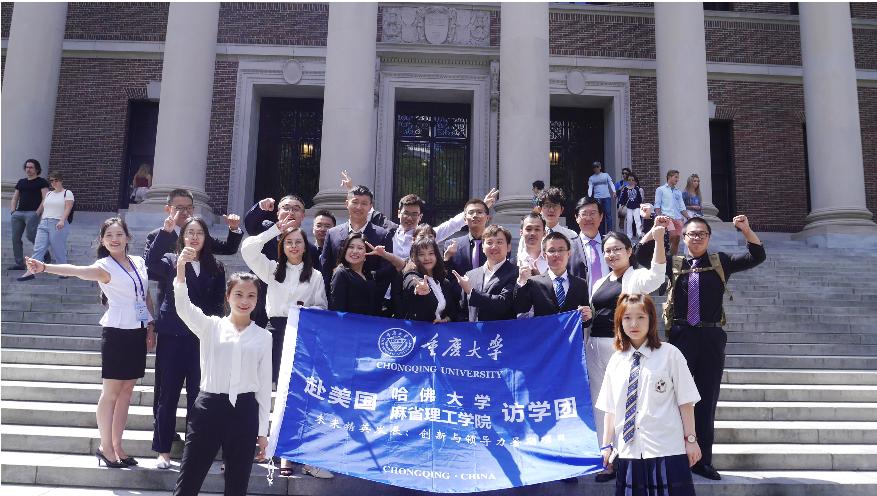
The overseas exchange has been brought to a satisfactory end. Let’s say thanks to every teacher and student that has contributed to the team. Life is a set of joyful gatherings and sad goodbyes. As members of the CQU family, we devote ourselves whether we meet or part. We’ll meet again.
